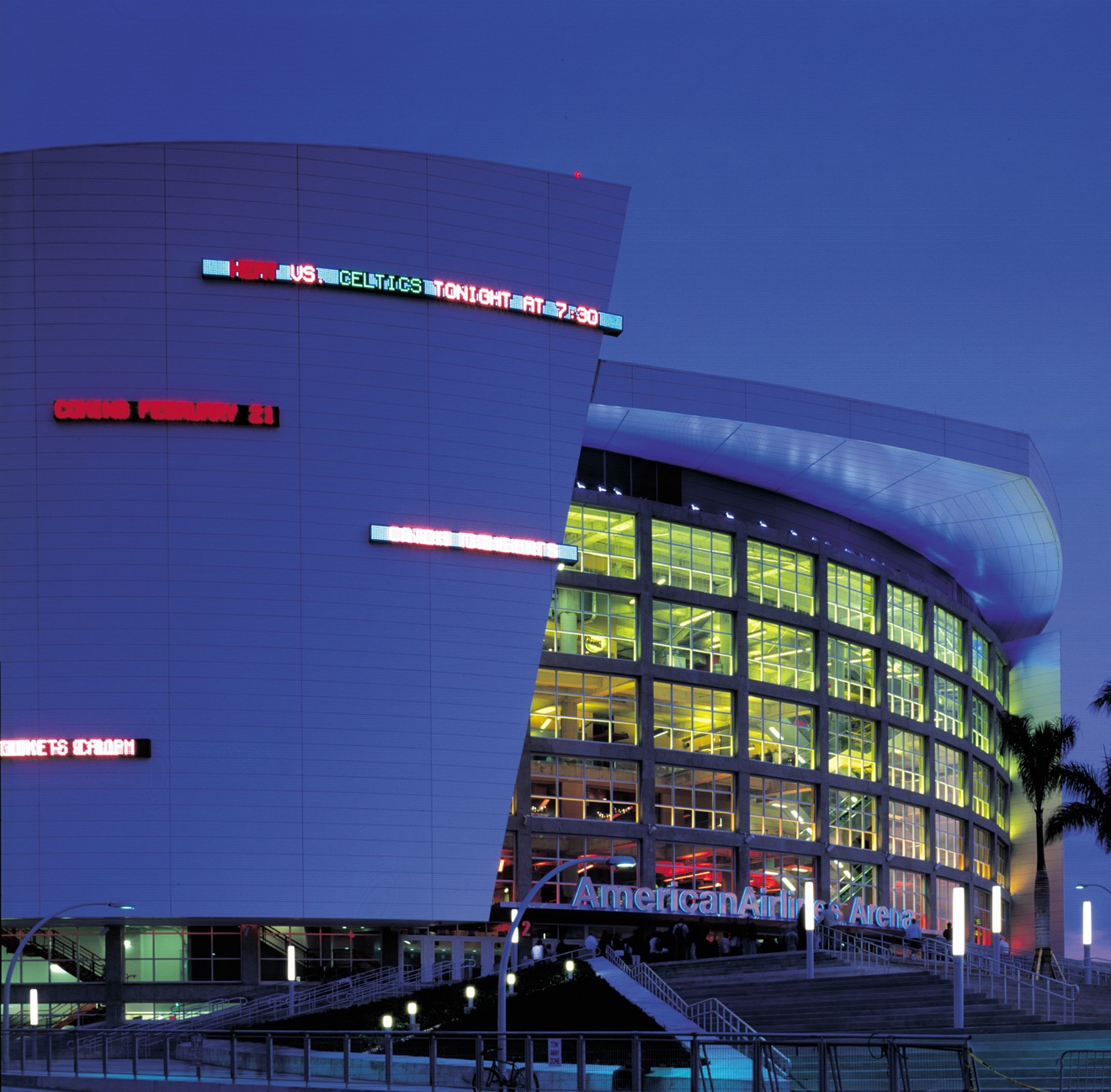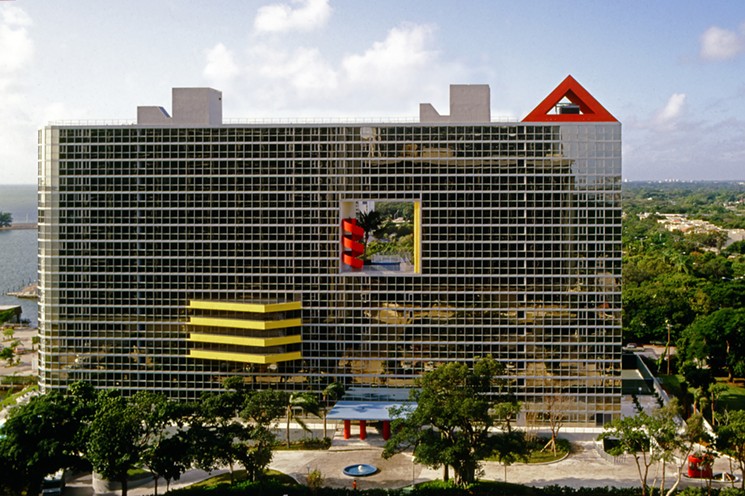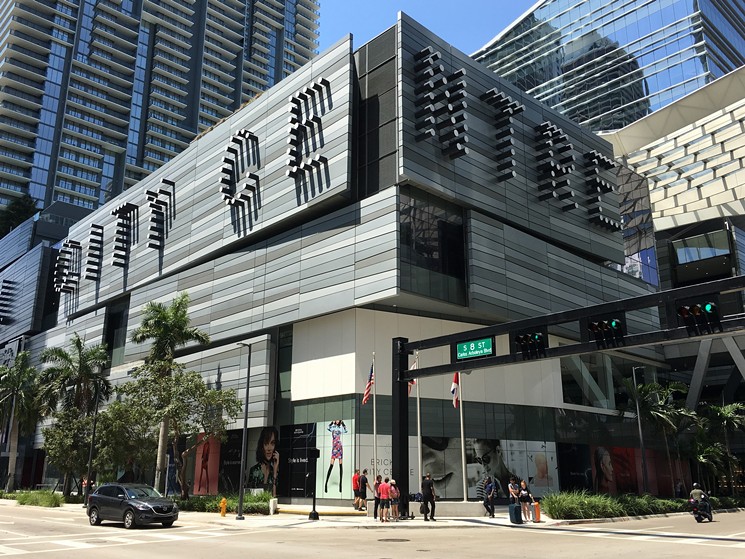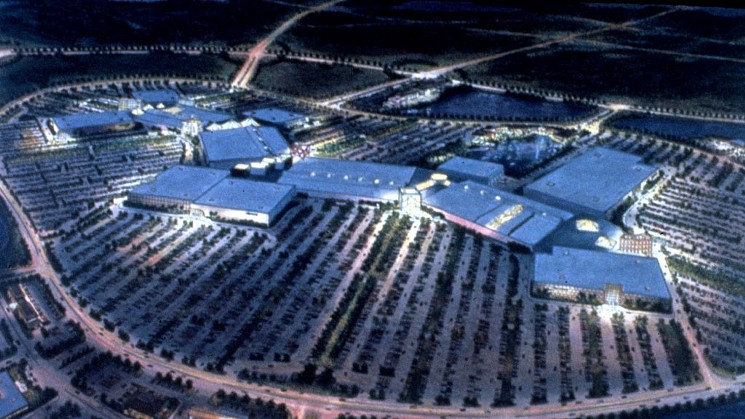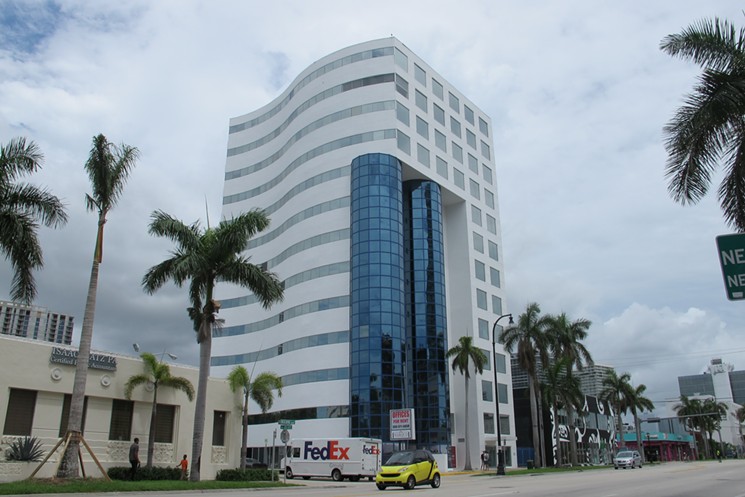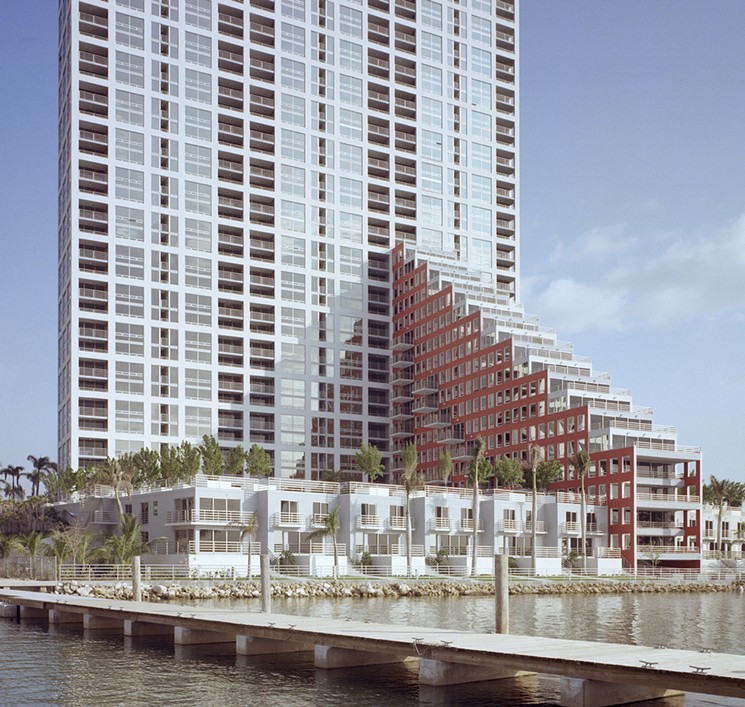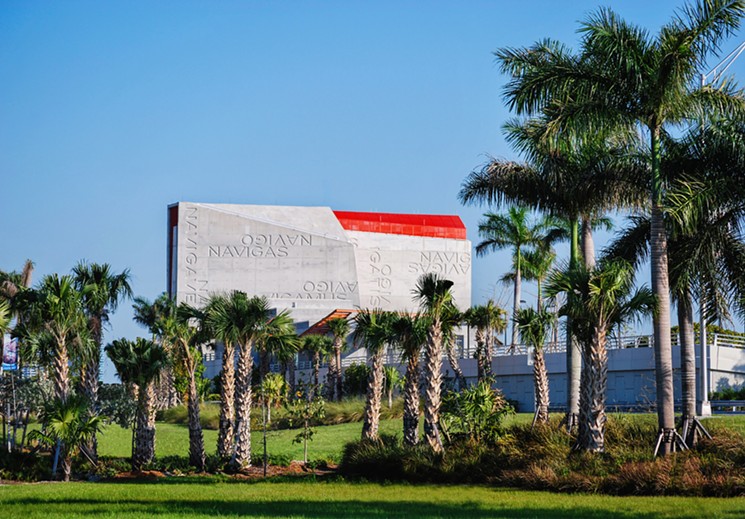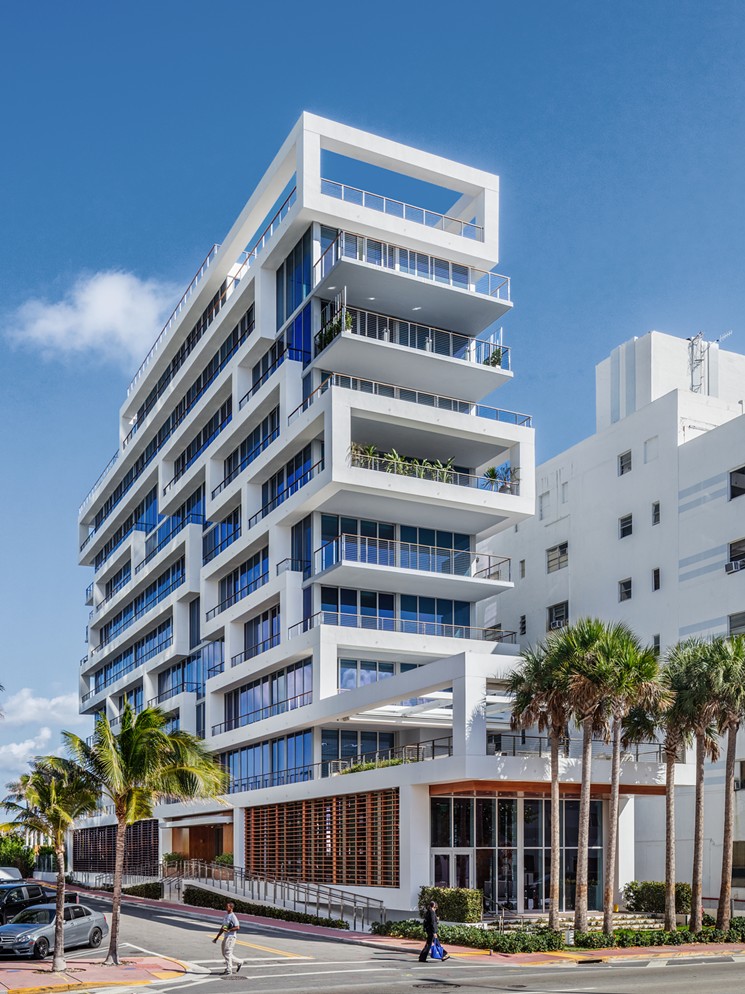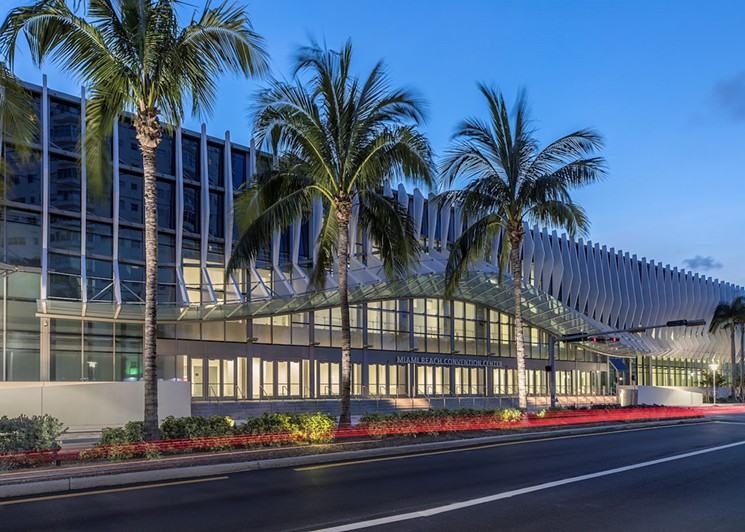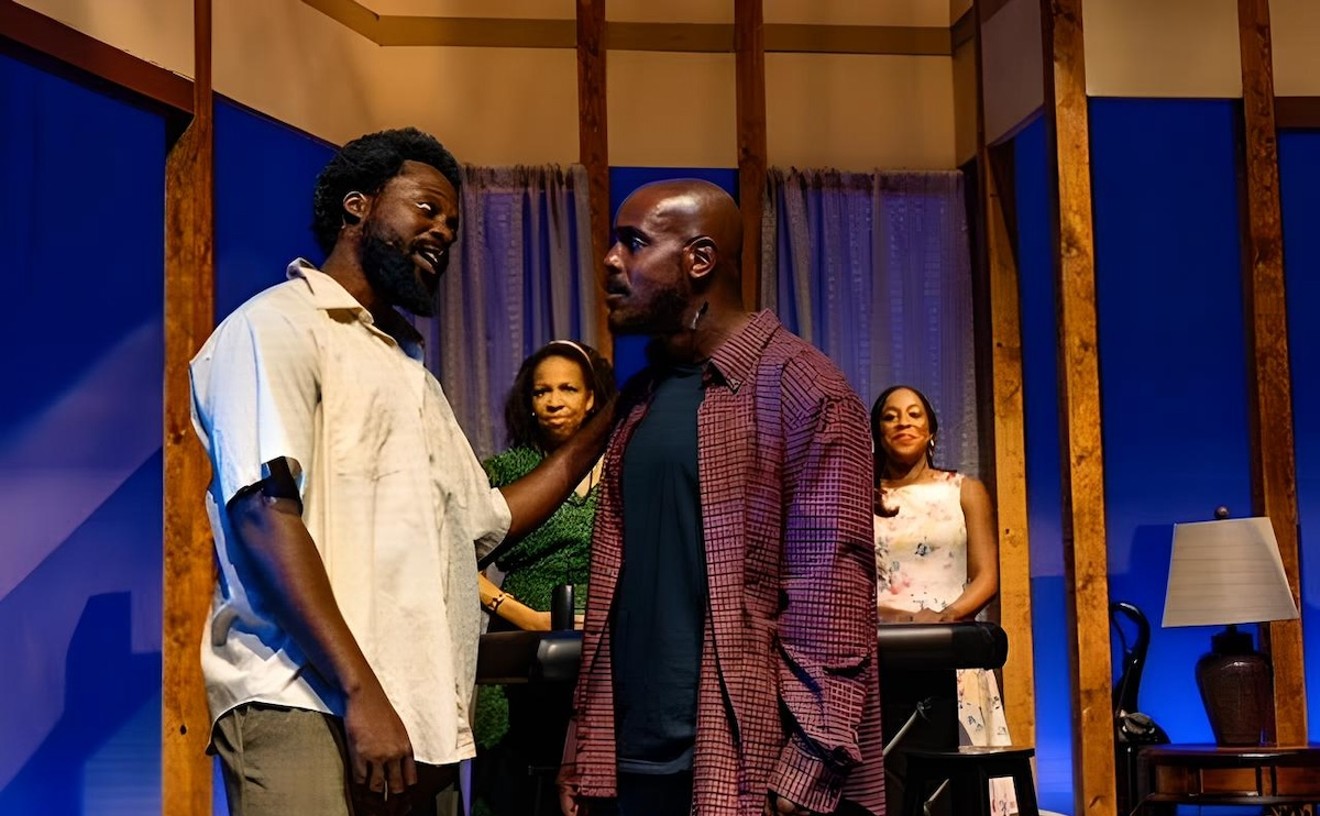“The book explores both our history and our global reach, which in reality are inextricably interconnected," Arquitectonica cofounder Bernardo Fort-Brescia says of the book. "Our contributions to the Miami architectural landscape often translate into what we can do for other cities, as our global clients look closely at what we have done or are proposing to do in our hometown. Miami has always remained our focus. We live with what we create here.”
It didn’t feel right to let this huge slab of paper and cardboard (seriously, the thing weighs like four or five pounds) just collect dust in our office. Instead, we were inspired to list our favorite Arquitectonica buildings, from creative condos to massive public spaces. See which South Florida landmarks made the cut, and pick up the book at your favorite local bookstore. (Remember to lift with your legs to avoid hurting your back.)
Atlantis. How do you turn a staid, Bauhaus-
Brickell City Centre. Miami is replete with unnecessary shopping experiences. Aventura, Bal Harbour, the Design District — how many Gucci stores and pricey malls do we need? With Brickell City Centre, Arquitectonica decided to do something more utilitarian. The firm opted not to disrupt the existing traffic plan, for starters; pedestrian bridges cross the streets below, affording views of the complex’s clean lines and “blocky volumes.” There are also environmentally conscious elements, from plantings to a “climate ribbon” designed to improve airflow. The shops and restaurants — an Apple Store, the premium movie theater CMX, the luxe Italian food hall La Centrale — aren’t exactly egalitarian, but, hey, it’s Brickell.
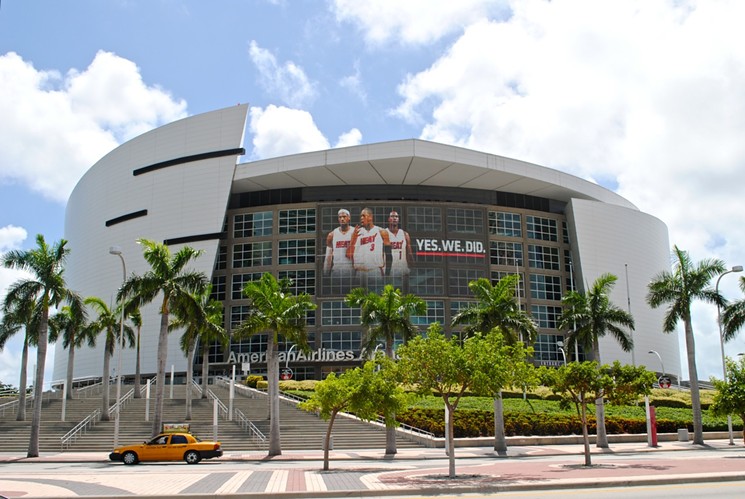
American Airlines Arena in 2010.
Photo by Bob B. Brown / Flickr
Sawgrass Mills. We can still remember the days when this behemoth of a shopping mall, spread across more than 2.3 million square feet on a single floor, had its tropical theming. In the late '90s, Sawgrass Mills held a kind of wonder thanks to these colorfully named sections: Yellow Toucan, Pink Flamingo, Blue Dolphin, White Seahorse, and so on. It wasn't surprising to learn later that the megamall’s playful design — from the pop-arty, Donald Judd-like entry structures to the circus-tent roofs near the Rainforest Cafe (another beloved childhood staple) — were done by Arquitectonica. The Mills have faded from those glory days: They switched out the animal-themed concourse names for numbered “avenues”; took out the animal animatronics near Rainforest Cafe, replaced it with a playground, then took that out too; and closed the awesome, kid-centric theme park Wannado City in 2011. But the memories remain, as does the totally radical theming in the outdoor Oasis section. Sure, Aventura Mall is bigger and
New Times Regional Headquarters. And now we come to a sentimental favorite, the former Miami New Times headquarters on Biscayne Boulevard. It was built back in the days when your beloved alt-weekly had both the means and motivation to brand an entire office building with its logo. Times have changed in the newspaper business, however, and New Times moved on, first to another office building on Biscayne and most recently to Wynwood. The old building still stands on the corner of NE 28th Street and Biscayne, not neglected, but perhaps a bit forlorn. It’s certainly not as impressive as the rest of the buildings on this list, but we can’t help but feel nostalgic about the place.
The Palace. Another early structure from the firm conceived and built in the late '70s, the Palace combined a conventional main tower with a bright-orange staircase-shaped second block. The book name-drops Le Corbusier, Sol Lewitt, and Euclidean geometry in its entry about the project, but we can think of another reference point: the Memphis Group, the Italian design collective founded by Ettore Sottsass in 1980. Its wacky, colorful designs and pop-art sensibility defined interior design for the rest of the decade, and because Miami was one of the most important locations in the world during that time, we can’t help but think those daring Italians might’ve looked at this building and thought to themselves, Now there’s something interesting.
PortMiami Tunnel. Proving itself to be a perfect architectural example of “get you somebody that can do both” — in this case, smart infrastructure and great design — Arquitectonica was partially responsible for the PortMiami Tunnel. Those hulking concrete slabs you see at the entrance of the tunnel, covered with Latin conjugates of the word “navigate,” are meant to conceal giant floodgates, preventing the tunnel from flooding during a hurricane.
Beach House 8. When we try to think of the most stereotypical image of Miami, it usually comes down to a woman in a bikini climbing out of a pool at (this is the important part) a large, modern, nearly all-white house overlooking the water. It’s the imagery we see in all sorts of music videos and every other Burn Notice episode, and Arquitectonica perhaps wanted to re-create this vision in Miami Beach. Problem is, there wasn’t enough space. Beach House 8 solves the problem by stacking each building-block-like floor on top of the other, making the most out of a thin plot on Collins Avenue. Miami Beach has transitioned through many architectural phases, from art deco in the '20s to Morris Lapidus extravagance in the '50s. Let this building serve as its own example of our current white-clad, modern era.
Miami Children’s Museum. Each part of the Miami Children’s Museum’s colorful exterior is meant to evoke one of the four elements: water, earth, fire, and air. The conical entryway represents air/wind, the wavy bits are water, and so on. You can let your kids know those facts the next time you head to the museum or pass it on the way to or from the beach. It might just fire up their imagination.
Miami Beach Convention Center Redevelopment. Call it the never-ending renovation, but at least the $620 million improvements to the Miami Beach Convention Center, a collaboration between Arquitectonica and Fentress Architects, aren’t a total waste of money. For one, the building looks fantastic thanks to the undulating, Calatrava-
500 Brickell. Now you might look at this pair of apartment buildings and the bridge at the top with a giant, o-shaped hole in the middle and think, Hold on — didn’t the Umeda Sky Building in Osaka pull that off years ago? But if you actually throught that, you’d be a nerd, and we wouldn’t want that, would we? What makes the pop-arty 500 Brickell a truly unique spin on the twin-tower genre is not simply the eye-popping use of basic shapes, from the rectangular-slatted balconies making up the façade to the eye-catching red and white grid of bubble windows on the parking garage and the aforementioned rooftop orb. It’s that Arquitectonica decided to install a circular pool right below that orb. To us, that isn’t just style — that’s the potential for a (trained, professional) skydiver to parachute through that hole and land in the pool. It could happen!
Hard Rock Stadium Redevelopment. I recently moved away from South Florida, but before that, I had to commute from Broward whenever I went to the New Times office. That meant taking a painful journey on the Turnpike, past the Golden Glades, and down I-95 for the rest of the way, then back again at day’s end. Of course, the stadium is right there, and although the broad rectangle and mast-like spires of its new roof are a recent, rather handsome addition — part of a refurbishment that has so far attracted the 2020 Super Bowl, massive soccer games, and even the Rolling Loud festival — I thought of them as a sort of checkpoint. When I saw them after braving the hell of the interstate, in plain white or lit in fluorescent colors after sunset, a wave of relief would flush through me because I knew I was halfway home.

